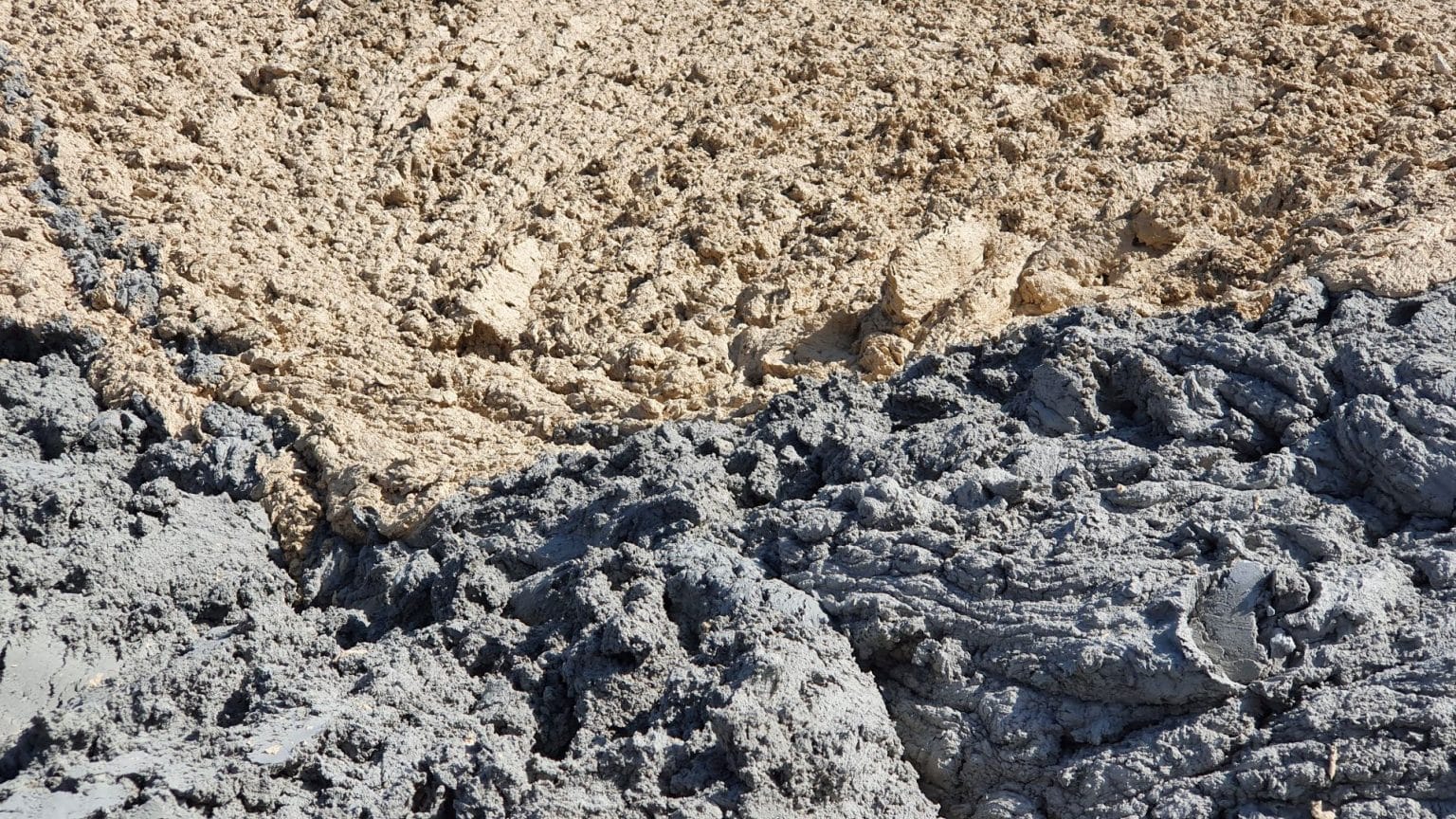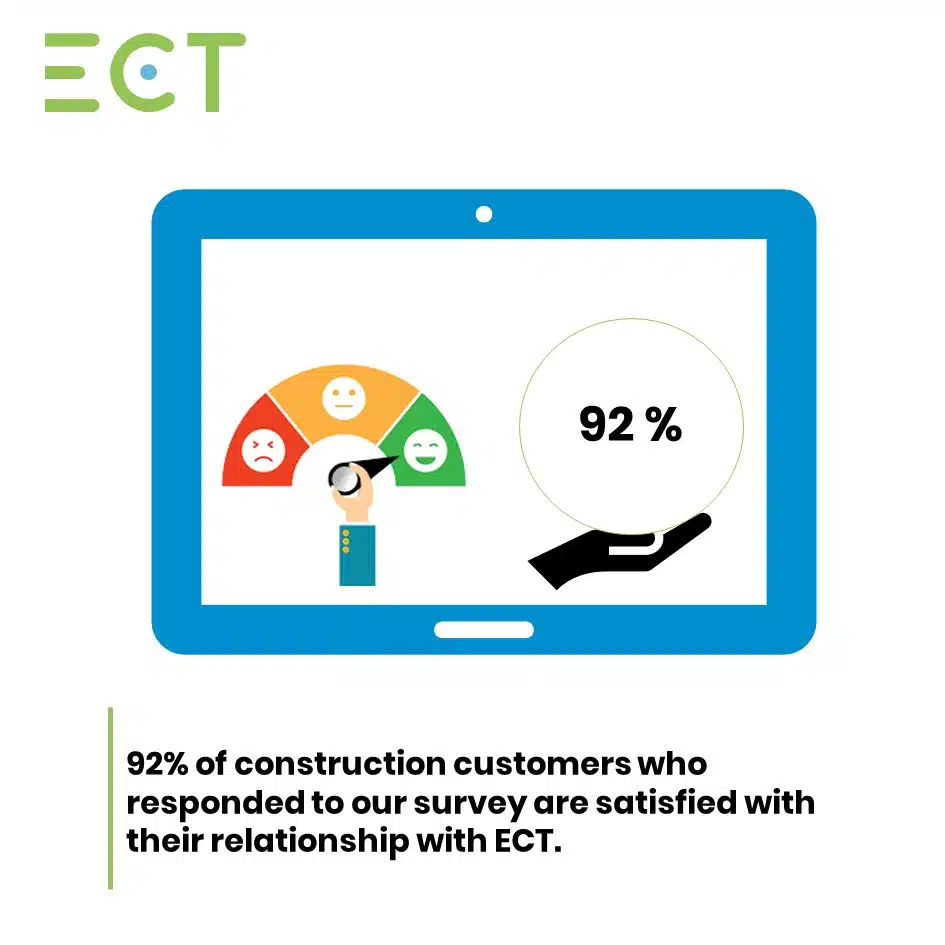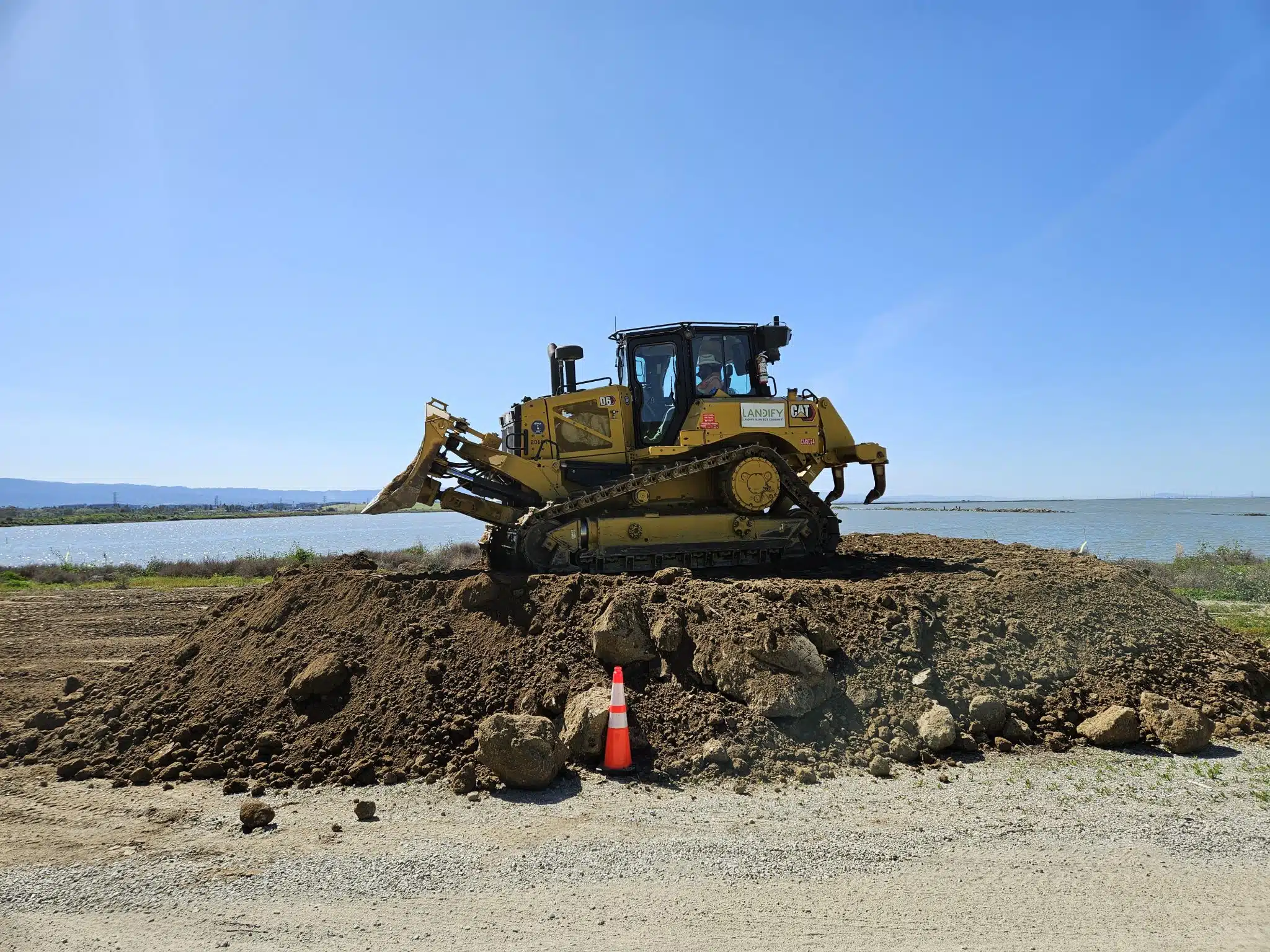Soil reception conditions
- Between June 2020 and April 2021, ECT received soil from its Villeneuve-sous-Dammartin (77) and Annet-sur-Marne (77) sites that complied with the regulations but was potentially pyritiferous. The soil came from the excavation of the Grand Paris Express metro lines.
- Since 2021, ECT has been in contact with the Prefecture of Seine-et-Marne, the Ministry of the Environment and BRGM. These discussions validated ECT’s approach to risk management and analysis methodology.
- Two prefectoral decrees issued in July 2022 set out the procedures, controls and analyses carried out by ECT. They are planning two annual survey campaigns.
What is pollution risk?
Detection process
The presence of pyrite is difficult to detect; although it is not directly visible in these sedimentary formations, in most cases we can only see indirect evidence of its presence due to its oxidation. This ore may only become contaminated after oxidation, with prolonged exposure to water and air.
Chemical principles and measurements of oxidation
Pyrite (FeS2) can oxidize in the presence of air and water, leading to acidification of the environment. This oxidation is characterized by an increase in sulfide levels and acidification of the environment.
Analyses must therefore measure :
- sulfide content
- acidogenic potential = AP
- neutralizing potential = NP
The NP/AP ratio is then studied to assess the risk of environmental acidification. If this ratio is greater than 2, there is no risk to the receiving environment.
What do the numerous analyses carried out on the sites have to say?
Studies already carried out show :
- Very high NP/AP values, demonstrating the high neutralizing power of the medium analyzed: at least 4 times the value characterizing the absence of risk
- No acidification of the environment. This means no oxidation.
How did ECT manage the land?
- ECT does not backfill with water.
- The soil received was immediately put to use and quickly covered. The exchange phase with the air was therefore very short, lasting only a few days. At these sites, ECT receives large quantities of soil from traditional building sites in the Paris region, most of which is marl-limestone, which is very abundant in the region. Limestone (basic) neutralizes the risk of acidification.
- The techniques used to process excavated soil at ECT sites are highly protective and neutralize the risk of pyrite oxidation.
Consideration of the risk of pollution of water catchments downstream of the Annet-sur-Marne and Villeneuve-sous-Dammartin sites: what's the situation?
An essential environmental and health issue.
Risk assessment and consideration are systematically examined during the site authorization procedure. In the case of potentially pyritiferous soils, the specific framework for taking the risk into account is as follows:
- The 2 sites are outside the water catchment protection perimeter.
– Analyses of the soil received at each site show that there is no acidification in the environment, so there is no risk of transfer to drinking water catchments. - For each site, water analyses are carried out as part of the operating permits.
The storage of soil in high crates and their rapid recovery guarantees :- no peripheral runoff during the acceptance phase.
- no contact between rainwater and potentially pyritiferous soil once the landfill has been capped
- The soil inputs took place between June 2020 and April 2021. During and since this period, all analyses at the 2 sites have complied with regulatory thresholds.
Elements specific to the Villeneuve-sous-Dammartin site
- The ECT site is located upstream of the Mitry-Mory drinking water catchment area.
- The site rests on a layer of clay, a naturally impermeable geological element, effectively protecting the deep water table that supplies the drinking water catchment.
- 5 piezometers, arranged in the direction of groundwater flow, are used to monitor groundwater analyses. The Biberonne river, which runs to the east of the site, is also subject to regulatory measures. All analyses performed comply with regulatory thresholds.
Elements specific to the Annet-sur-Marne site
- The Annet-sur-Annet site is outside the protection perimeter of the Ru de la Beuvronne catchment area, a tributary of the Marne where the downstream catchment point is located. It should be noted that the flow of the Beuvronne is extremely low (4.2 l/s) compared to that of the Marne (1000 m³/s).
- As previously mentioned, the methodology used to store and rapidly cover the soil prevents runoff of rainwater that has been in contact with the soil from reaching the Beuvronne river.
- The prefectoral decree of August 2021 strengthened the analytical measures implemented on the site at the time of the operating permit by adding three measurements upstream and downstream of the catchment point on the Marne.
Further information: FAQ
Is pyrite present in the 167,000 tonnes of soil received? Are there any abnormal concentrations on these sites?
The soils come from deep subsoils and are potentially pyritiferous. However, no analysis has confirmed the presence of pyrite in these soils. As a reminder, it is oxidation that can be dangerous (and not its mere presence). Acidification of the environment is the consequence and the marker. However, analyses at the sites show basic pH levels and strong neutralization.
Did the Prefecture “discover” the presence of pyritiferous soils on ECT sites in July 2022?
The prefectoral decrees of July 2022 formalize the exchanges begun a year earlier with ECT and BRGM. These decrees confirmed the analysis methodology to be deployed.
Are we far above the standards set by BRGM for the Villeneuve-sous-Dammartin and Annet-sur-Marne sites?
The standards referred to in the press concern sulfur content, not pyrite content. It should be noted that BRGM has not issued any standards for excavated soil from the Grand Paris Express. It specifies thresholds above which an analysis methodology must be implemented. .
Is there a risk of off-gassing, of sulfurous gases?
No ! This would be a scientific untruth. Sulfur gas, H2S, comes from the decomposition of organic matter. Oxidation of this type of ore does not produce sulfurous gas.


